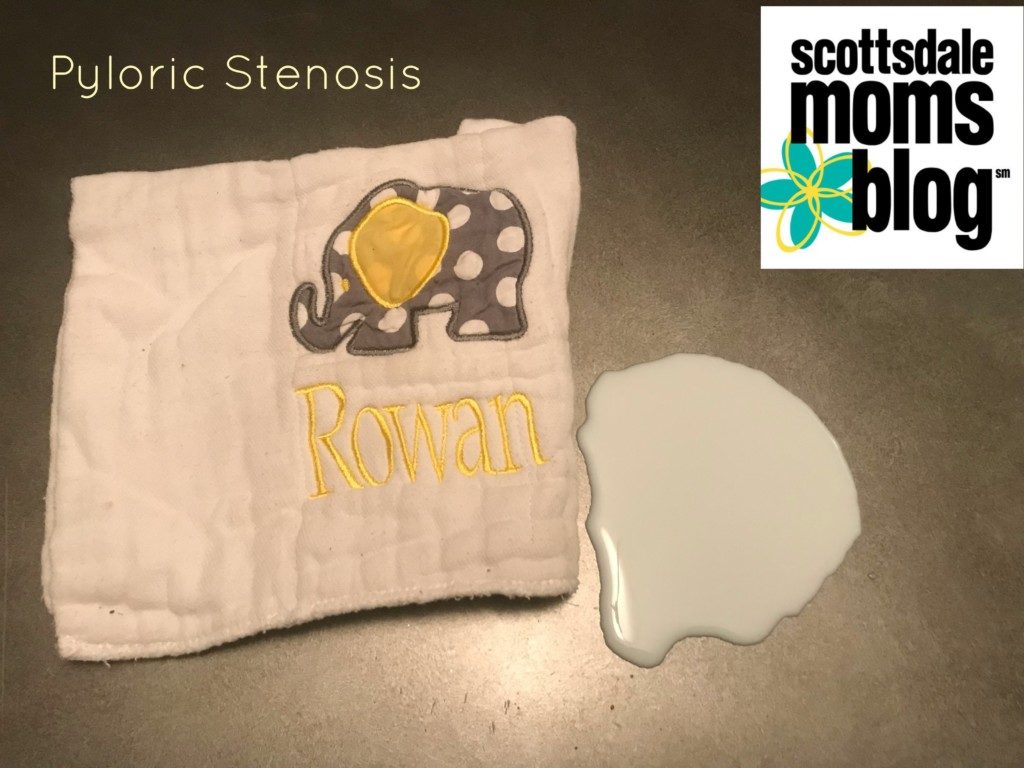Sometimes being a mom means listening to your gut and speaking up when your child’s health seems amiss. For us, this wasn’t normal acid reflux, it was something more dangerous: Pyloric Stenosis.

My first son Declan suffered from textbook GERD (gastroesophageal reflux disease, or acid reflux). He would spit up a mouthful of milk every feeding, was often cranky or fussy, and really gassy. I dreaded the time after feedings because his mood would change drastically as he digested food.
My pediatrician suggested simple modifications for him. These included changing my own diet for breast milk, adding some liquid antacids, and supplementing using gentle formulas.
These changes eased his discomfort until he “grew” into his digestive system at 6 months. I quickly forgot about any of the hardships of feeding a newborn.
18 months later, his little brother, however, brought back those memories, adding new ones of his own.
Rowan was a happy and eager eater until he was about 3 weeks old. That was when everything changed. He would spit up every feeding. His eyes would be wide, stunned by the act of vomiting. Onesies and sheets would be soaked in fresh formula. He became unusually sleepy. His diapers took longer to wet than before, too.
This was not his big brother’s acid reflux.
I knew at the onset of his digestive problems something was amiss. So off to my pediatrician I went searching for help. She diagnosed him with GERD, giving me samples of formula for children with very sensitive stomachs and told me to add antacids.
Nothing changed.
As a few days passed, my baby’s chubby cheeks were growing more gaunt. His weight began to drop. As a mom, I was angry and upset, snapping at my husband and others.
Watching your child continually vomit is an emotional experience. It was embarrassing to see friends and family covered in milk after they volunteered to feed him. Rowan’s constant spitting up was messy, scary, and above all, not normal.
In my fog of mom of a newborn sleeplessness, I scoured the Internet looking for answers. Page after page offered tips for treating GERD and some even suggested other diagnoses.
One of which, pyloric stenosis, stuck out. Simply put, pyloric stenosis is when the muscle between the stomach and the small intestine thickens so that food cannot pass. Your child, therefore, projectile vomits what is in his stomach.
I went back to the pediatrician later that week insisting that something was wrong. She couldn’t find the physical indication for pyloric stenosis (an olive- sized knot in the abdomen) but said we could go to the Emergency Room for an x-ray to find out for sure.

That simple x-ray made it obvious that we were dealing with pyloric stenosis, and it had to be treated quickly. Only a few hours after that morning’s appointment with the pediatrician, Rowan was being prepped for emergency surgery.
Through two small laparoscopic incisions, the surgeon was able to cut the muscle that had thickened. Within a few days, Rowan was back to eating as a newborn normally would.
Today, Rowan has two tiny dots on his belly from the operation. As a family, we remember the scare he gave us, but are relieved that his condition was something that was easily treated.
We are happy to also report that Rowan is a hearty and adventurous eater.



















Great post.
Muscles of pylorus part of the stomach abnormally enlarges causing narrowing of the opening and thereby preventing food from entering the intestine. It mainly affects babies between birth and 6 months of age. Here is the treatment for Pyloric Stenosis in Babies.visit at
https://bit.ly/2K64lBE
Comments are closed.